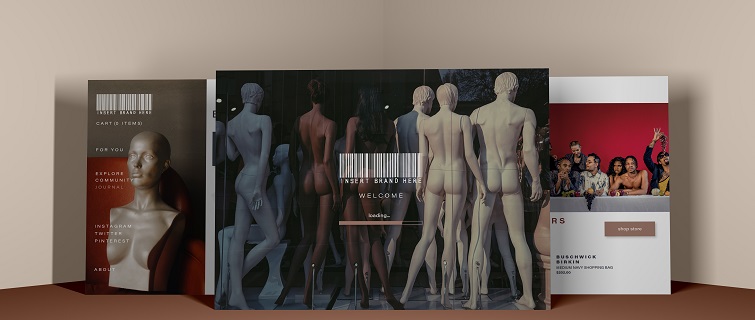
The question is simple on the surface, impossibly complicated in real life:
“Should clothing be separated by gender?”
That was the issue two graduate students raised this spring as part of a Design Leadership class at Georgetown University. They had taken on a “wicked design problem”—yes, that’s an actual term for a design-based response to a seemingly insurmountable societal obstacle—of creating an online platform for people whose gender identity doesn’t fit into the neat, societally defined categories of “male” and “female.”
“Theirs is a response to the question, ‘How does the fashion industry work towards a future where more and more people will identify as either non-binary or gender fluid?’” said instructor Jennifer Small, whose class is part of the University’s Master's in Design Management & Communications program. “It’s something you’re already seeing the beginnings of, but you’re only seeing it at the height of fashion, at the Gucci’s and the Bottegas and the European fashion houses, whose prices are beyond the reach of most people.”
After much research and analysis, the students, Hannah King and Joaquín Van Thienen, designed an online platform for buying non-gender-specific clothing that is ingenious in many ways. And, by removing gender categories, it would help personalize the shopping experience for all.
“The fashion industry is continually changing,” King said. “So, this momentum that we have and this publicity about gender-fluid fashion needs to be captured and taken into the mainstream.”
Leading by Design
What is design leadership? It is, quite literally, those two words taken together— “it is the combination of what design is, solutions created around the parameters that are given, and leadership, the stake one puts in the ground for their design solution,” Small said.
In asking the question, “Should clothing be separated by gender?”—and implying that “no” is a viable answer—King and Van Thienen waded into the treacherous culture wars that have defined American life and politics for the past half century.
That’s one way to look at it. But, seen in a different light, it highlights what Wendy Zajack, the program’s Faculty Director, called “the transformational ability of design to change the world.”
Even without considering gender identity, shopping for clothes can be trying for anyone who feels they don’t fit the “categories” created for them. And while the apparel industry has responded to public sentiment by adding plus-size and more racially diverse models, female shoppers, in particular, are still confronted by images of impossibly skinny models who seem to exist only on the pages of catalogues and advertising flyers.
Dispensing with Categories
For non-binary and gender fluid people, this problem is compounded by the fact that almost all clothes are separated by gender. To address this issue, King and Van Thienen conceived of a website that takes gender out of the equation entirely. Instead, it organizes clothing by size and body type and includes functions that enable consumers to create their own unique style, based on what looks right for them.
In a wonderful twist, the name of the site, which appears under a simulated barcode is: “Insert Brand Here.” In other words, you define the brand; the brand does not define you.
“There are many reasons I think this project is so stellar, but an overarching theme is giving control back to the audience, or end user, or shopper,” Small said. “And it’s not just control over the shopping experience. It’s control over how they are able to translate their perception of themselves to the rest of the world.”
